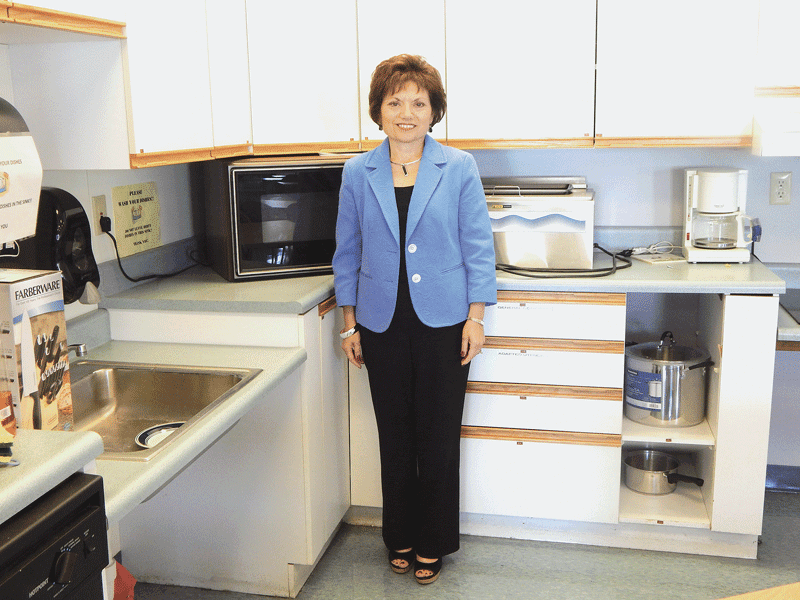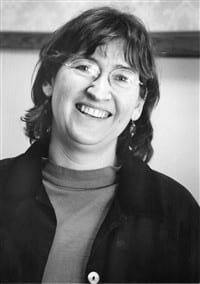Bridging the Gap – AIC Creates New Doctoral Program for Occupational Therapists
Imagine the following scenarios:
• A mother with multiple sclerosis is too weak to hug her children and wants to find other meaningful ways to demonstrate her love.
• A teen who habitually cuts herself needs to develop new coping skills and find a healthier, satisfying way to get sensory feedback.
• An elderly woman who is unsteady on her feet wants to walk down the aisle when her granddaughter gets married.
• A young person who can’t throw a ball overhead due to a disability wants to be able to play basketball.
There is a specialty in healthcare that finds solutions every day to myriad unique challenges like the ones just presented. It’s called occupational therapy, and the need for this type of individual service is growing.
“OTs work in many settings; some look at people’s cognition, others work in behavioral health with people who have learning disabilities or substance-abuse disorders, and still others help clients relearn skills after an accident or injury,” said Allison Sullivan, assistant professor in the Division of Occupational Therapy at American International College in Springfield.
She added that AIC has created a new, post-professional doctoral program for occupational therapists working in the field to meet the future demand for teaching professionals or individuals who possess the qualifications needed to assume high-ranking positions.
And the need is certainly there: the Bureau of Labor Statistics cites occupational therapy as one of the fastest-growing healthcare fields. It projects 29{06cf2b9696b159f874511d23dbc893eb1ac83014175ed30550cfff22781411e5} growth by 2024 and estimates that 30,400 new jobs will be added to the 114,600 that already exist. In addition, jobs such as occupational therapy assistants are expected to rise by 40{06cf2b9696b159f874511d23dbc893eb1ac83014175ed30550cfff22781411e5} during the same time period.
The job pays well: the median salary in 2015 was $80,150 for OTs and $54,520 for OT assistants. “But in order to produce more occupational therapists, we will need more faculty members who can teach the next generation,” said Cesarina Thompson, dean of the School of Health Services at AIC.
“Our new program will do that and will also prepare people to take on leadership roles or engage in research,” she continued, adding that the new program will start during the 2016-17 academic year and can be completed almost entirely online.
She noted that many college instructors are Baby Boomers who are likely to retire in the next decade, so planning for the future is critical.
“It takes years of experience and study to become a credible faculty member,” she said, explaining that instructors typically have a specialty and draw on their experience in the workplace, and although many local educational institutions, including AIC, Springfield College, and Bay Path University, offer master’s degrees in occupational therapy, it can be difficult to find a doctoral program.
Sullivan said it takes dedication and commitment to become an instructor, especially since the pay may not be much different than what experienced providers working in the field can earn. But it does require additional education.
“Teaching involves far more than just determining what students need to know. You have to figure out the best way to teach the information,” she said, adding that AIC’s doctoral program will provide OTs with the tools they need to teach, which will be equally important for people who assume leadership positions, as they are often required to conduct training in the facilities where they are employed.
Students in the new, 30-credit program will also learn how to conduct research, which can be very involved and is done in the field as well as in academic settings.
The program has been approved by the National Assoc. of Schools and Colleges, and although the majority of learning will be done online, students will be required to participate in an orientation and three residencies on the AIC campus that will include six hours of direct instruction and at least 12 hours of outside work.
Individualized Work
Sullivan said 30{06cf2b9696b159f874511d23dbc893eb1ac83014175ed30550cfff22781411e5} of OTs are employed in schools, 30{06cf2b9696b159f874511d23dbc893eb1ac83014175ed30550cfff22781411e5} work in skilled-nursing facilities, 30{06cf2b9696b159f874511d23dbc893eb1ac83014175ed30550cfff22781411e5} are in rehabilitation facilities, and 10{06cf2b9696b159f874511d23dbc893eb1ac83014175ed30550cfff22781411e5} have jobs in other places.
But need is growing in every area due to a variety of factors. Baby Boomers are aging, and many require help to remain independent; the rise in the number of children diagnosed with autism-spectrum disorder continues to grow; and public awareness campaigns, such as ones directed at helping people identify the symptoms of stroke, are bringing more people to hospitals who need a continuum of care.
Baystate Rehabilitation Services at Baystate Medical Center reports it is seeing an increase in the number of patients who need treatment, ranging from infants in the hospital’s neonatal unit to elderly people who receive treatment in outpatient centers.
“Our volume continues to grow; we’re serving more physicians in the community and seeing more patients throughout all units of the hospital as well as in our outpatient locations,” said Manager Jim Maloney.
Supervisor Erin Jarosz concurred, noting that, as this healthcare discipline gains increasing recognition, the need for qualified practitioners continues to grow.

Indeed, OTs take a holistic approach to healthcare as they help children and adults address issues that include improving health and wellness, mental health, productive aging, rehabilitation and disability, and the world of work.
“They help older people live independently and manage health conditions on their own, and also work with children and youth on a wide range of issues that include stress management and weight management,” Lamb noted.
However, what really sets the profession apart from other disciplines is the fact that practitioners address the quality of life a person leads, which includes their psychosocial needs as well as their physical health.
“It’s one of the important aspects of their job,” Sullivan noted, explaining that, when people are in an accident or have physical or mental impairments that hinder their ability to interact with others in a meaningful way or take part in activities that are important to them, it is critical to their well-being to address the problem.
Due to the complexity of the situations occupational therapists encounter on a daily basis, most employers require them to have master’s degrees.
The AIC program has the same requirement, although Thompson noted that OTs with a bachelor’s degree can take 12 credits of bridge courses, then start the new doctoral program.
“The field of occupational therapy will celebrate its 100th birthday next year, and our new program is grounded in the centennial vision of the AOTA,” Thompson said, adding that it states that all OTs in the future will need skills that include leadership, the ability to research, knowledge of best practices, and an understanding of legal and ethical issues. Students will be able to use experiences from their own practice as they examine leadership and management theories and concepts and learn how to apply them.
Sullivan told HCN it’s important for future faculty members to teach students not to make assumptions about their clients and instill the belief that they won’t know what is possible until they work with a person to create solutions to challenges they want or need to overcome.
It’s hard to know what these goals are if they aren’t expressed, but an OT’s creativity can change lives in unexpected ways. As one example, Sullivan conducted her doctoral research on attitudes that healthcare providers have toward people with intellectual disabilities, and set up a program that brought consumers from Human Resources Unlimited in Springfield to the AIC gymnasium to play basketball or engage in other physical activities with a class of OT students.
When they arrived, a man in a wheelchair began crying. “He said it had always been his dream to be in a college gym, and he never thought it would happen,” she recalled, adding that the students learned that seemingly small things can make an enormous difference in the quality of people’s lives.
Future Outlook
As the AOTA and the profession head toward that 100th anniversary, Lamb said, OTs will continue to work to make sure that people have access to services that help them accomplish the things they want to do.
“Our profession focuses on what is important to each individual, which is distinctly different than other professions. We know there is a growing demand for what OTs do, but we need to look at new ways of delivering services,” she noted, adding that AIC’s doctoral program will help graduates identify and develop programs in the community to meet the increasing demand.
Thompson said students will undertake group projects involving case studies that will involve critical reflection and will be able to employ what they have learned in their own practice. “It’s important because graduates may need to create new curriculums and figure out the best way to teach things, or find ways to motivate their staff to do a better job,” she told BusinessWest.
Sullivan hopes the program will encourage more OTs to consider teaching.
“As the profession enters its centennial year, I hope more therapists will think about the future of our field. We can’t meet demands if we don’t translate research into teaching and conduct research in clinical settings that validates the benefit and value of what we do,” she said. “We’re the new kid on the block in terms of treatment compared to healthcare professions such as nursing, but we have a unique approach that differs from what is offered by other service providers.”



